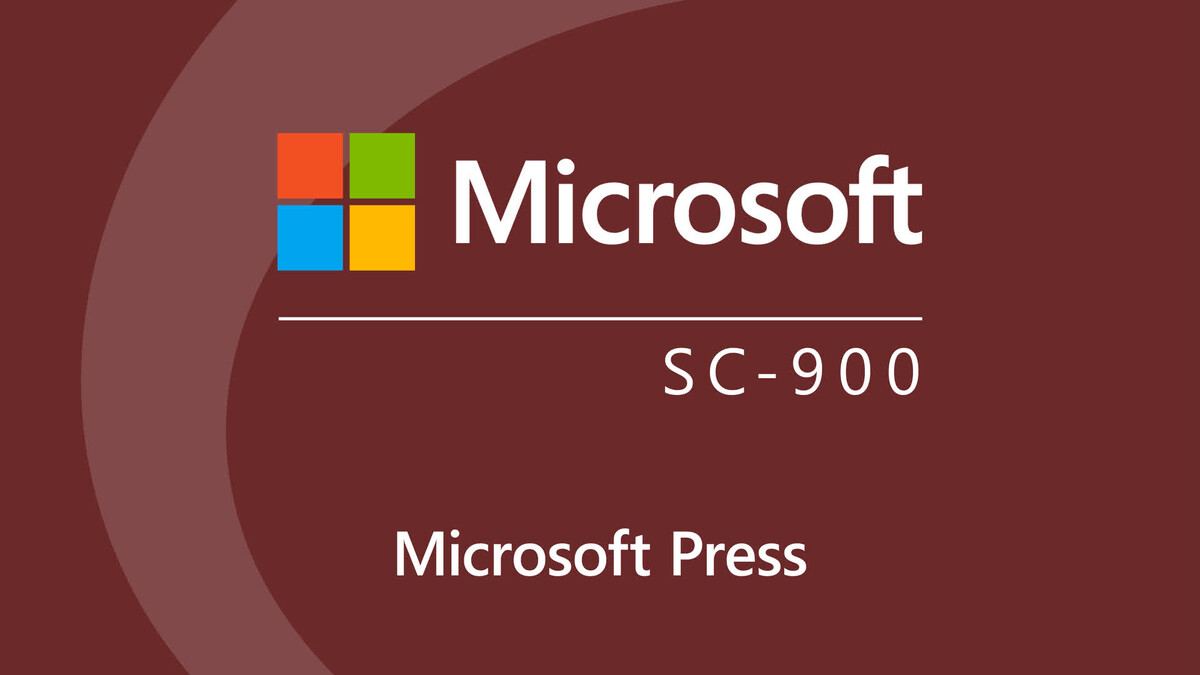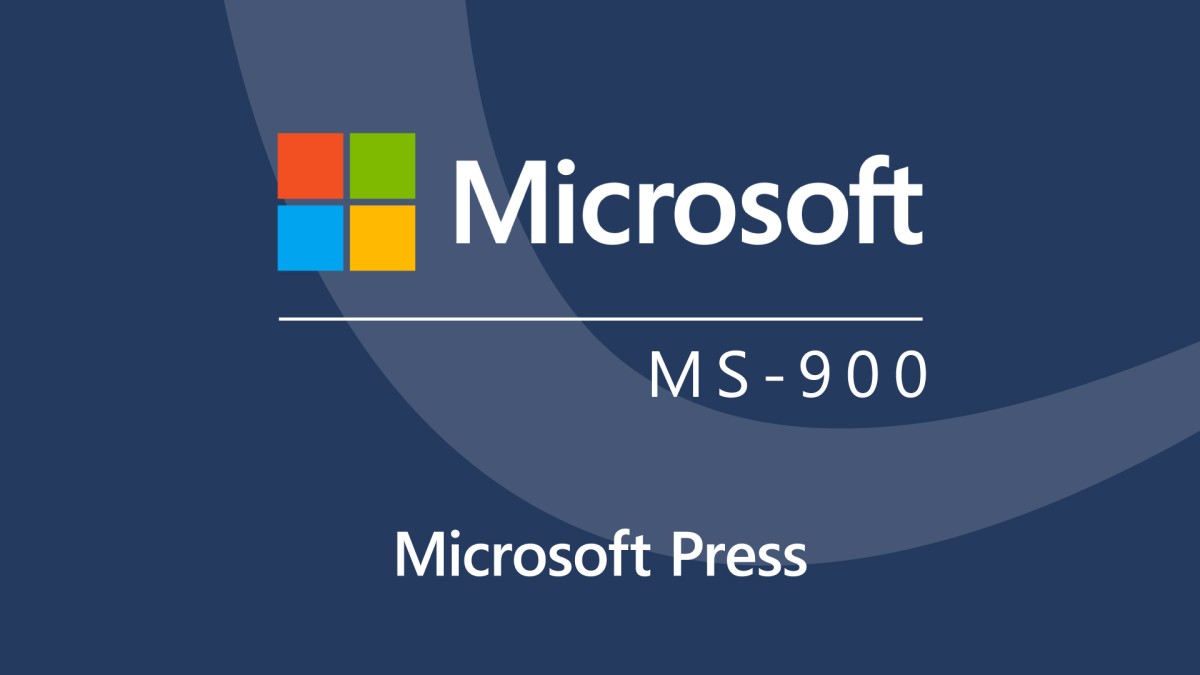Introduction
Get started with Microsoft Security, Compliance, and Identity Fundamentals (SC-900) exam
()
1. Describe Security, Compliance, and Identity Concepts
Module one: Introduction
()
Module one, demo: Set up your Azure, security, and compliance tenants
()
2. Describe Security and Compliance Concepts
Learning objectives
()
Describe the shared responsibility model
()
Describe defense in depth
()
Describe the Zero-Trust model
()
Describe encryption and hashing
()
Describe governance, risk, and compliance (GRC) concepts
()
Lesson one: Recap
()
3. Define Identity Concepts
Define identity as the primary security perimeter
()
Define authentication
()
Define authorization
()
Describe identity providers
()
Describe Active Directory
()
Describe the concept of federation
()
Lesson two: Recap
()
4. Describe the Capabilities of Microsoft Entra (formerly Azure Active Directory)
Module two: Introduction
()
Module two, demo; Manage user, group, and role access in Entra ID
()
5. Describe the Function and Identity Types of Microsoft Entra ID
Learning objectives
()
Describe Microsoft Entra ID (formerly Azure AD)
()
Describe types of identities
()
Describe hybrid identity
()
Describe the different external identity types
()
Lesson three: Recap
()
6. Describe the Authentication Capabilities of Microsoft Entra ID
Describe the authentication methods
()
Describe multifactor authentication
()
Describe self-service password reset
()
Describe password protection and management capabilities
()
Lesson four: Recap
()
7. Describe Access Management Capabilities of Microsoft Entra ID
Describe conditional access
()
Describe the benefits of roles
()
Describe the benefits of role-based access control
()
Lesson five: Recap
()
8. Describe the Identity Protection and Governance Capabilities of Microsoft Entra ID
Describe Microsoft Entra ID governance
()
Describe entitlement management and access reviews
()
Describe the capabilities of privileged identity management (PIM)
()
Describe Entra ID protection
()
Lesson six: Recap
()
9. Describe the Capabilities of Microsoft Security Solutions
Module three: Introduction
()
Module three, demo: Explore cloud core infrastructure and the defender security features
()
10. Describe Core Infrastructure Security Services in Azure
Learning objectives
()
Describe Azure distributed denial-of-service (DDoS) protection
()
Describe Azure Firewall
()
Describe a web application firewall (WAF)
()
Describe network segmentation with Azure virtual networks
()
Describe network security groups (NSGs)
()
Describe Azure Bastion
()
Describe Azure Key Vault
()
Lesson seven: Recap
()
11. Describe Security Management Capabilities of Azure
Learning objectives
()
Describe Microsoft Defender for Cloud
()
Describe cloud security posture management (CSPM)
()
Describe how security policies and initiatives improve the cloud security posture
()
Describe enhanced security features provided by cloud workload protection
()
Lesson eight: Recap
()
12. Describe Capabilities of Microsoft Sentinel
Learning objectives
()
Define the concepts of security information and event management (SIEM) and security orchestration automated response (SOAR)
()
Describe threat detection and mitigation capabilities in Microsoft Sentinel
()
Lesson nine: Recap
()
13. Describe Threat Protection with Microsoft 365 Defender
Learning objectives
()
Describe Microsoft 365 Defender services
()
Describe Microsoft Defender for Office 365
()
Describe Microsoft Defender for Endpoint
()
Describe Microsoft Defender for Cloud Apps
()
Describe Microsoft Defender for Identity
()
Describe Microsoft Defender Vulnerability Management
()
Describe Microsoft Defender Threat Intelligence (Defender TI)
()
Describe the Microsoft 365 Defender portal
()
Lesson 10: Recap
()
14. Describe the Capabilities of Microsoft Compliance Solutions
Module four: Introduction
()
Module four, demo: Ensure compliance in Microsoft Purview
()
15. Describe Microsoft Service Trust Portal and Privacy Principles
Learning objectives
()
Describe the Service Trust Portal Offerings
()
Describe the privacy principles of Microsoft
()
Describe Microsoft Priva
()
Lesson 11: Recap
()
16. Describe Compliance Management Capabilities of Microsoft Purview
Learning objectives
()
Describe the Microsoft Purview compliance portal
()
Describe Compliance Manager
()
Describe the uses and benefits of compliance scores
()
Lesson 12: Recap
()
17. Describe Information Protection, Data Lifecycle Management, and Data Governance
Learning objectives
()
Describe the data classification capabilities
()
Describe the benefits of content explorer and activity explorer
()
Describe sensitivity labels and sensitivity label policies
()
Describe data loss prevention (DLP)
()
Describe records management
()
Describe retention policies, retention labels, and retention label policies
()
Describe unified data governance solutions in Microsoft Purview
()
Lesson 13: Recap
()
18. Describe Insider Risk, Ediscovery, and Audit Capabilities in Microsoft Purview
Learning objectives
()
Describe insider risk management
()
Describe eDiscovery solutions in Microsoft Purview
()
Describe audit solutions in Microsoft Purview
()
Lesson 14: Recap
()
Conclusion
Summary: Microsoft Security, Compliance, and Identity Fundamentals exam (SC-900)
()

